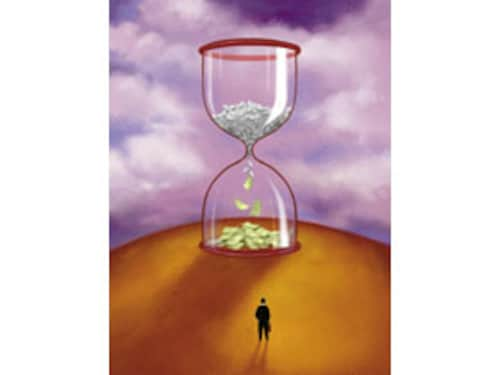Fixed Income: The 3 'I's Of Investing
Inflation, interest rates and illiquidity make fixed income an attractive option in the New Year


Talking about fixed income investment in January is like cycling to Leh. It is a risky adventure and you don’t know what to expect. Worse, the journey may come to an abrupt end.
The reason for this caveat is the Union Budget which will be presented in late February. The government will detail in it how much it plans to spend and borrow. It has implications for the availability of credit to industry and individuals, and how interest rates will move. Without this, it is futile to lock up money in fixed income instruments.
It is all the more true this year. Expectations of inflationary pressures and at least a small increase in interest rates make premature investment in fixed deposits, bonds, fixed income mutual funds or corporate paper a decisive no. Park your money in ultra short-term funds that you can redeem instantly at low costs. And wait for the budget. In the budget, look for government borrowings. Last year, Finance Minister Pranab Mukherjee announced the government will borrow Rs. 457,000 crore ($100 billion) in 2010-11. A similar amount was borrowed the previous year. These high numbers are only justified by the stimulus the economy needed to recover. This year, if borrowings increase, it could lead to a rise in interest rates. “We believe any gross borrowing number above Rs. 480,000 crore would impact bond market negatively,” says Ritesh Jain, fixed income, Canara Robeco Asset Management.
Jain maintains that inflation will remain firm in the coming year. “I believe RBI will raise interest rates by 50-100 basis points in the next six months as inflation concerns override growth outlook. Taking a cue from RBI, both short-term and long-term bond rates will move up in tandem,” says Jain.
Bank fixed deposits had been the most preferred saving option for Indians until last year. This fiscal year, there has been a slowdown in the growth of bank deposits as Indians diverted more than Rs. 100,000 crore to buy gold. Reserve Bank of India figures show deposit growth has eased to 15 percent in 2010 from 18.4 percent last year.
But with interest rates going up, bank deposits could make a comeback. Rates now range between 7.25 percent and 8.25 percent. They could rise by about 100 basis points.
Mutual funds are a smart way to maximise fixed income returns in a given interest rate scenario. Of late, retail investors have started putting money in gilt funds which invest in government securities. It is the institutions that invest in the G-Sec market and the funds route is efficient for the small investor to get a piece of the action.
Most fund managers expect short-term funds to do well. “Indian inflation being influenced highly by commodity prices will keep RBI hawkish and short-term interest rates high. So opportunities will be available at the short end of the curve. We also believe that economic growth will start moderating by the second quarter of next year which might open up attractive investment opportunities in duration funds,” says Jain.
The lower growth in bank deposits in 2010 coincided with a brisk growth in credit. That means there could be a liquidity tightening for fresh borrowings. Companies could be forced to raise money from the public. These will have superior interest rates relative to those from banks. Go for blue chips here and there is practically no risk of default.
First Published: Jan 06, 2011, 06:42
Subscribe Now